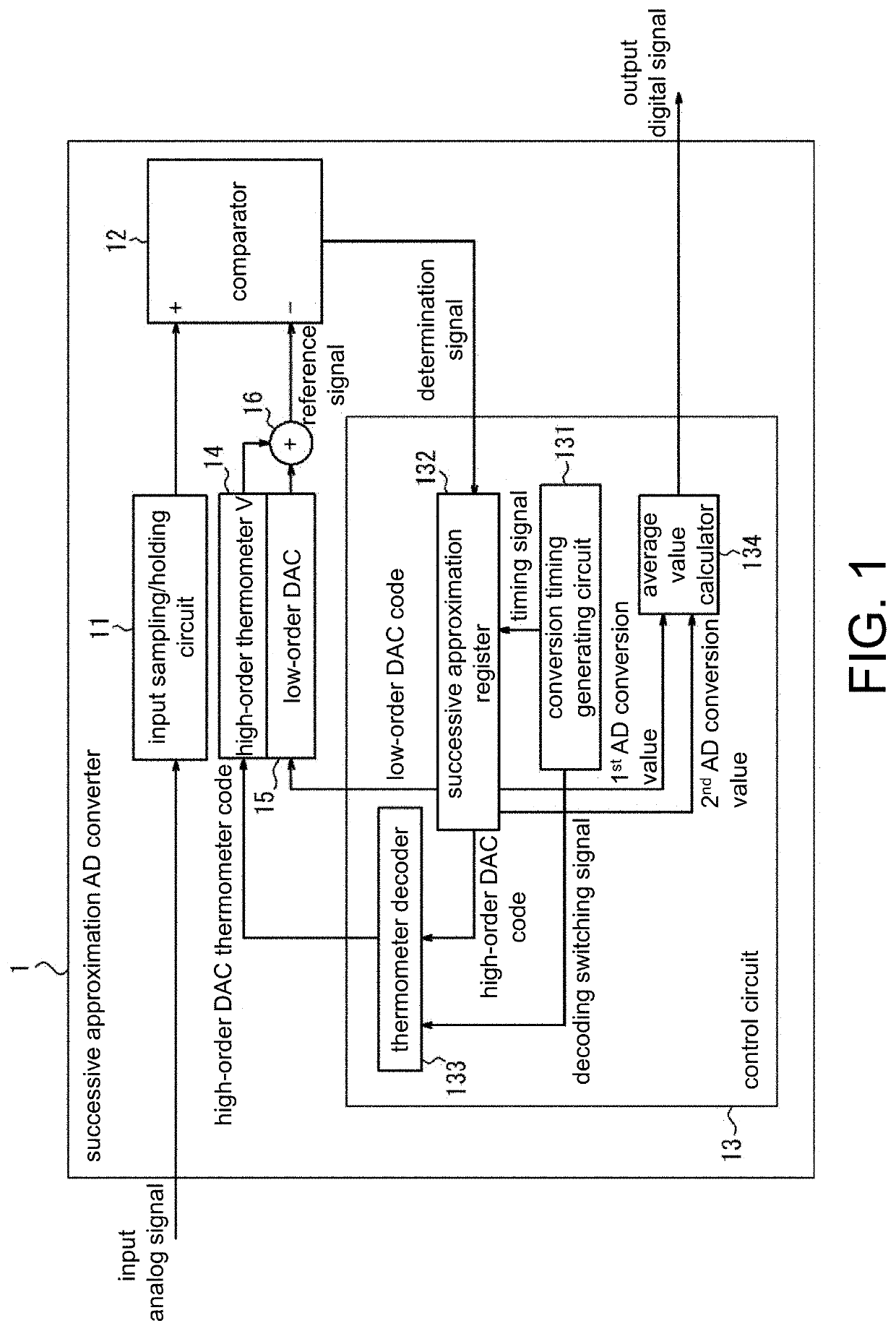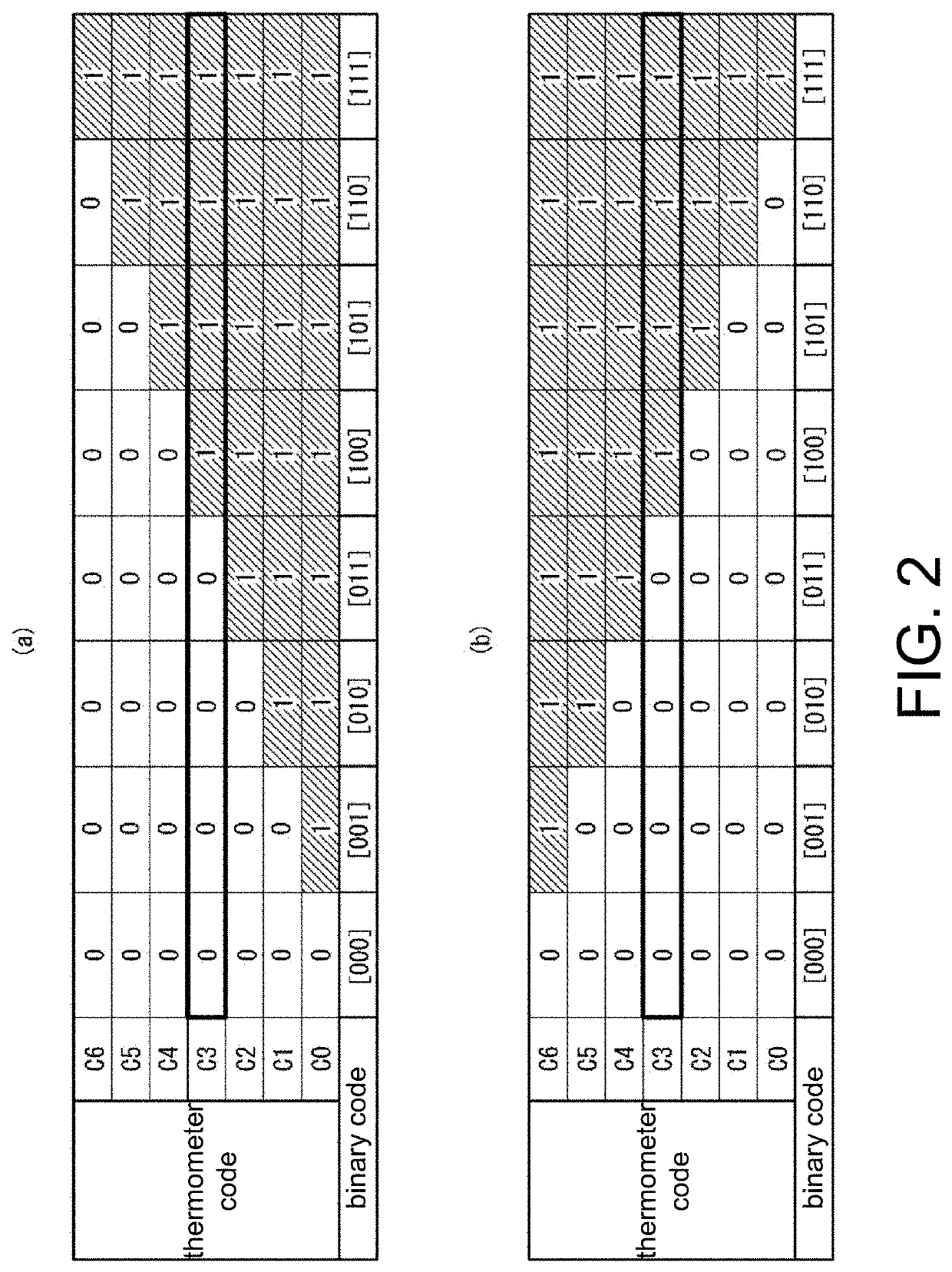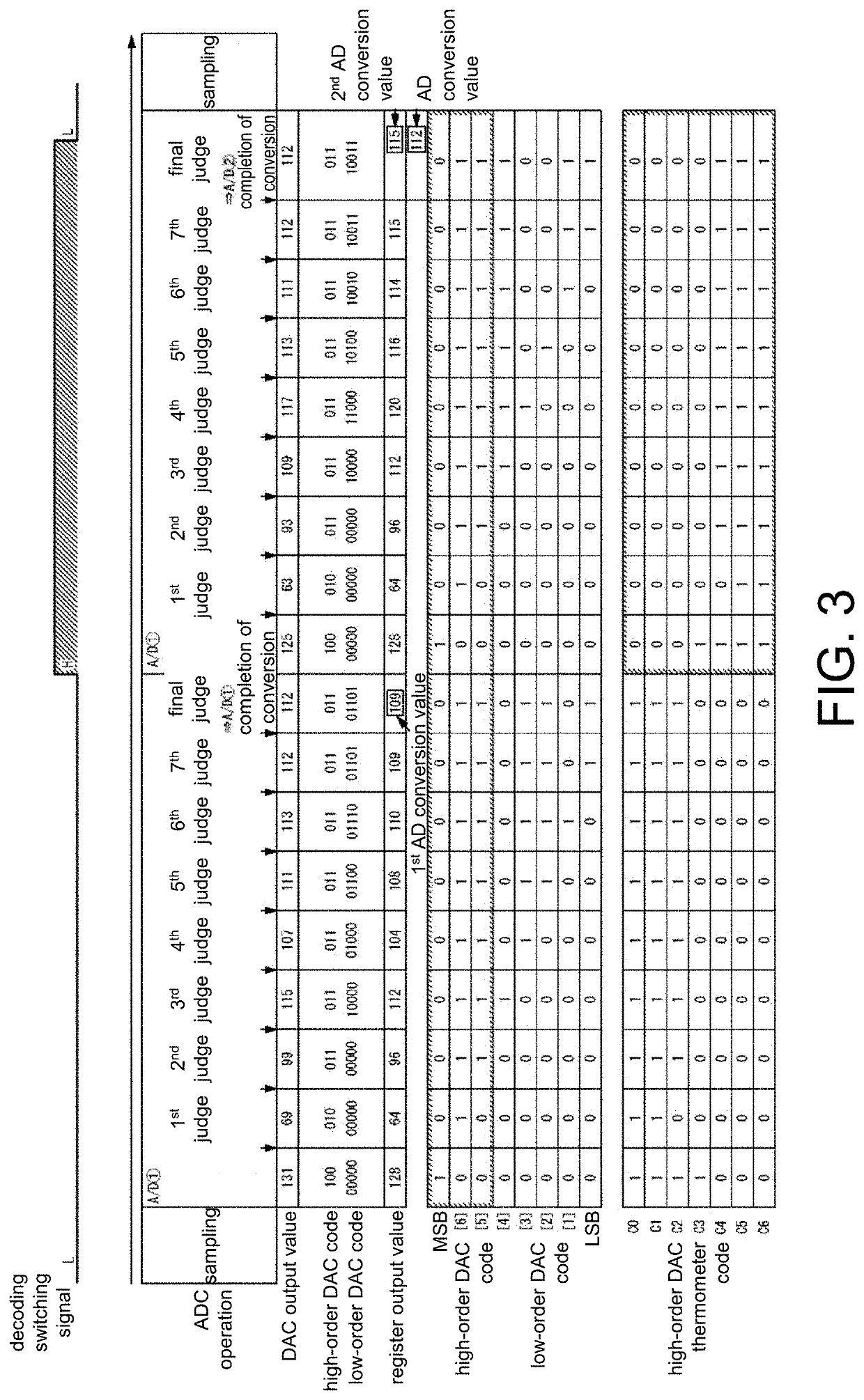Successive approximation ad converter
a technology of approximation and converter, applied in the field of approximation ad converter, can solve the problems of differential nonlinear error of transitional change, constant unevenness of integral nonlinear error, etc., and achieve the effect of improving the integral nonlinear error
- Summary
- Abstract
- Description
- Claims
- Application Information
AI Technical Summary
Benefits of technology
Problems solved by technology
Method used
Image
Examples
first embodiment
[0037]A successive approximation AD converter according to a first embodiment will be described below. FIG. 1 is a block diagram illustrating an example of a configuration of the successive approximation AD converter according to the first embodiment. The successive approximation AD converter 1 illustrated in FIG. 1 includes an input sampling / holding circuit 11, a comparator 12, a control circuit 13, a high-order thermometer DAC (first DA converter) 14, a low-order DAC (second DA converter) 15, and a reference signal generator 16.
[0038]The input sampling / holding circuit 11 samples and holds an input analog signal.
[0039]The comparator 12 compares the input analog signal held in the input sampling / holding circuit 11 with a reference signal, and generates a judge signal indicating a result of comparison to the control circuit 13. The reference signal is a signal which is generated by the reference signal generator 16.
[0040]The control circuit 13 includes a conversion timing generating ...
second embodiment
[0077]A successive approximation AD converter according to a second embodiment will be described below. As described above, the INL waveform changes by switching the decoding method, but a difference thereof is a peak-peak value of the waveforms at most. That is, it means that there is only two times an amount of error of the maximum INL error in a successive approximation AD conversion result obtained by performing conversion using the first decoding method at most. In an AD converter of eight bits including the DA converter illustrated in FIG. 16, a conversion range thereof is ±128 codes.
[0078]FIG. 7 is a diagram illustrating an example of a conversion error which is caused by causing the thermometer decoder 133 to switch the thermometer code conversion rule. Here, the same integral nonlinear error as illustrated in FIG. 4 is illustrated, and a conversion error of -6 codes is generated after the first thermometer code conversion rule has been switched to the second thermometer cod...
third embodiment
[0096]A successive approximation AD converter according to a third embodiment will be described below. In the first embodiment and the second embodiment, the thermometer decoder 133 converts the high-order DAC code to different high-order DAC thermometer codes using two types of thermometer code conversion rules in one cycle of AD conversion. On the other hand, in this embodiment, the thermometer decoder 133 converts the high-order DAC code to different high-order DAC thermometer codes using four types of thermometer code conversion rules in one cycle of AD conversion.
[0097]FIG. 12 is a block diagram illustrating an example of a configuration of a successive approximation AD converter 3 according to the third embodiment. The successive approximation AD converter 3 according to this embodiment is different from the successive approximation AD converter 1 according to the first embodiment, in that a control circuit 13b is provided instead of the control circuit 13. Only differences fr...
PUM
 Login to View More
Login to View More Abstract
Description
Claims
Application Information
 Login to View More
Login to View More - R&D
- Intellectual Property
- Life Sciences
- Materials
- Tech Scout
- Unparalleled Data Quality
- Higher Quality Content
- 60% Fewer Hallucinations
Browse by: Latest US Patents, China's latest patents, Technical Efficacy Thesaurus, Application Domain, Technology Topic, Popular Technical Reports.
© 2025 PatSnap. All rights reserved.Legal|Privacy policy|Modern Slavery Act Transparency Statement|Sitemap|About US| Contact US: help@patsnap.com



